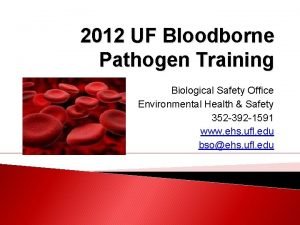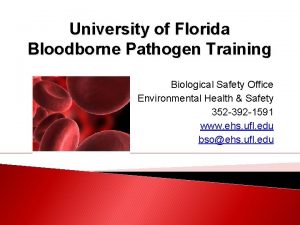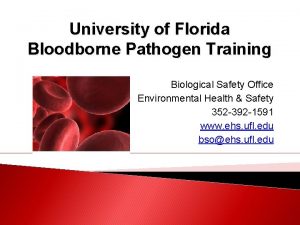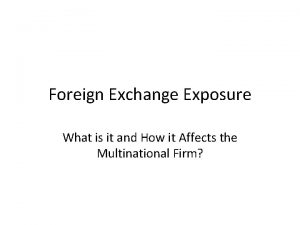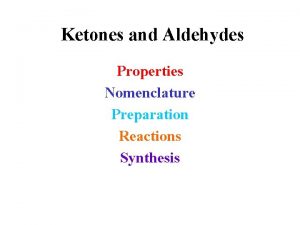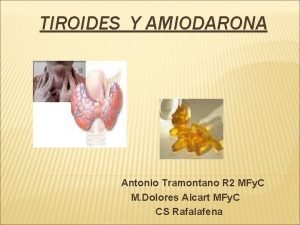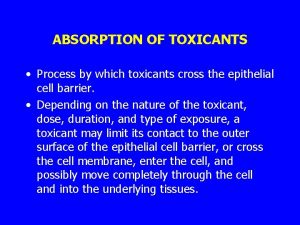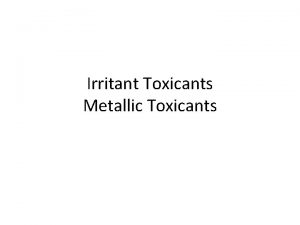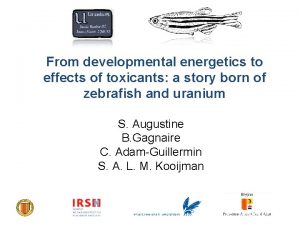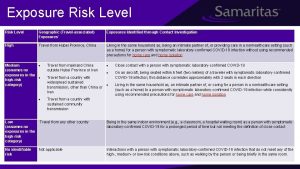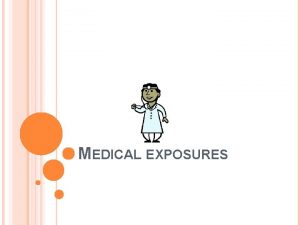Emerging exposures to developmental toxicants Mary Wolff Stephanie












- Slides: 12

Emerging exposures to developmental toxicants Mary Wolff, Stephanie Engel, Jessie Buckley, Rob Mc. Connell, Dana Barr Icahn School of Medicine at Mount Sinai, NY University of North Carolina Johns Hopkins University of Southern California Emory University CHEAR: Children’s Health Exposure Analysis Resource Established by the National Institute of Environmental Health Sciences, 2015

What exposures are we missing because they are not measured? Many exposures have become reported often during the past 10 years but are not being measured in people Some existing methods could be used to measure exposure biomarkers – before health effects are evident Agents with NHANES biomonitoring data get more attention

Major exposures related to child development - POPs 15 years ** * * *1970 – Swedish breast milk monitoring *1972 -76 – US ban on production and use *1984 -86 – Rogan and Jacobson: PCBs and child neurodevelopment *2013 – IARC PCBs upgraded by IARC to Group 1, known carcinogen *2014 – IARC DDT 10 years probably carcinogenic Group 2 A Less persistent HHCs: 1970 – Swedish breast milk monitoring 1985 2004 – PBDE 5, 10 banned in US 2005 – PFOA voluntary reduction 2014 - PFOA possibly carcinogenic IARC Group 2 B*

Major exposures related to child development – nonpersistent chemicals – phthalate metabolites 1976 - Rodent data on male reproduction 1982 – EHP monograph, focus on cance(r 1985 – rat toxicokinetics – polar metabolites 1982, 2000 IARC possibly --> unevaluable 2000 – NHANES monitoring 2004 – male reproductive function GM, all NHANES 1999 -2012

Major exposures now recognized, were little studied in the 20 th century, still few or no human exposure data PHTHALATES AND PHENOLS # Citations, 1990 -2000 # Citations, last 10 years 1 Phthalate replacements (long. . . DINCH (1, 2 -cyclohexane. . . DEHT (bis-(2 -ethylhexyl)-. . . DEHA (bis-(2 -ethylhexyl)-. . . 10 1000 Number of indexed publications on selected suspect chemicals >Tenfold rise during the past 10 years, compared to 1990 -2000 Bis Phenol A Bisphenol F, Bisphenol S Nonyl phenol Parabens Triclosan, trichlocarban 2, 5 -Dichlorophenol (2, 4 -. . . Child health associations now being reported for some phthalates and phenols – mainly those cited before 2000

Major exposures now recognized, were little studied in the 20 th century, still few or no human exposure data HALOGENATED FLAME RETARDANTS # Citations, 1990 -2000 # Citations, last 10 years 1 10 100 PBDE - exposure - plasma/serum PFOA Long chain perfluoroalkyl. . . TBBP-A Hexabromocyclododecane Brominated. . . Brominated phthalates. . . Chlorinated flame. . . Number of indexed publications on selected suspect chemicals that have risen >tenfold during the past 10 years, compared to 19902000 (Human, exposure, urine) 1000 # Citations, 1990 -2000 # Citations, last 10 years SUNSCREENS, PESTICIDES, NEONICOTINOIDS, NANOS, E-CIGS 1 Benzophenone-3 or oxybenzone Other terpenes (Limonene, . . . Avobenzene (Butyl. . . PESTICIDES Neonicotinoids NANO PARTICLES OR. . . Nano titanium, Zn, Ag, Au Nano organics e-CIGARETTES e-cigarettes, Flavorings Nicotine, cotinine, e-cigarettes Volatiles (acetoin/3 -. . . 10 10

http: //cen. acs. org/periodicgraphics. html

e-juice Table 2 – Estimated mass of flavoring chemicals in e-cigarettes (μg/ecigarette). nicotine propylene glycol diacetyl 2, 3 -pentanedione=acetyl propionyl acetoin (ug) vegetable glycerin Sweeteners - Ethyl maltol Flavoring - cherry, cheesecake, cinnamon, tobacco, fruit-, candy, cocktail, menthol . . ” 1. 78 million children tried e-cigarettes as of 2012. . ” Allen et al. , & Christiani, EHP, PMID: 26642857 VAPOR FLAVOR MENU (Click Flavor to Order)

Methods already exist to determine biomarkers for some but not all toxicants. Most of the nonpersistent chemicals have urinary metabolites Toxico. IS, GC/LCMS etc kinetics standards etc methods Long-chain phthalates etc (DINCH) BPA, F, S; TCS, TCb; Cl-Ph. OHs, parabens Nonyl phenol x Avobenzene, octisalate, etc (sunscreen) x Br/Cl-fire retardants PBDE other Br/CL FRs ? Perfluoroalkyl acid replacements (long chain) e-cigarette flavorings & additives x Neonicotinoid pesticides Nanoparticles x

How can we anticipate exposures related to child development Agents without exposure data also lack studies of health effects Existing analytic methods can be used or minimally modified to measure some exposures Valid methods can be developed based on toxicokinetics, requiring research on metabolism and analytic approaches Replacement chemicals are not tested, but can exposure principles be suggested by homology with the suspect agent? Can pretesting be implemented? CHEAR – NIEHS funding: U 2 CES 026555 U 2 CES 026561 U 2 CES 026560 NIEHS Core grants - P 30 ES 023515 P 30 ES 019776 P 30 ES 010126 R 01 ES 021777


Ignoring putative toxins leads to unreasonable delay 1940 1970 1985
 How many splash exposures were reported at uf in 2020?
How many splash exposures were reported at uf in 2020? How many splash exposures were reported at uf in 2020
How many splash exposures were reported at uf in 2020 Uf bloodborne pathogen training
Uf bloodborne pathogen training Types of foreign exchange exposure
Types of foreign exchange exposure Did investigator assign exposures
Did investigator assign exposures Mary wollstonecraft mary a fiction
Mary wollstonecraft mary a fiction Kelsey wolff
Kelsey wolff Personajes los invasores
Personajes los invasores Nomenclature
Nomenclature Birgitta wolff
Birgitta wolff True believer poem
True believer poem Remy wolff
Remy wolff Efecto wolff chaikoff
Efecto wolff chaikoff
